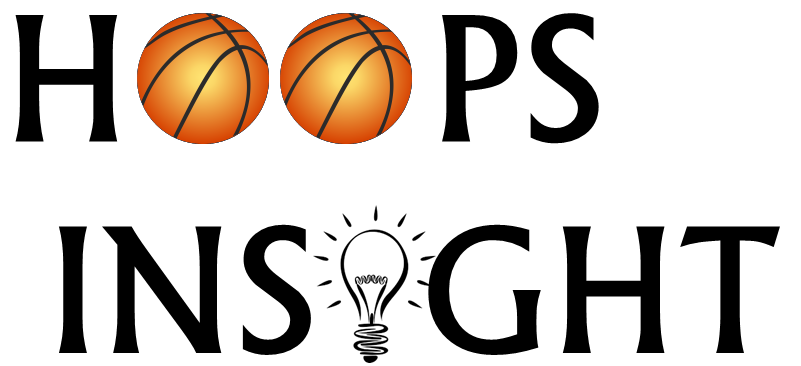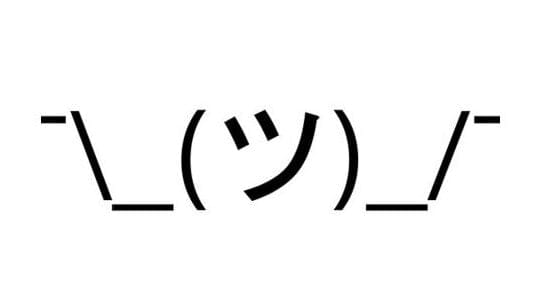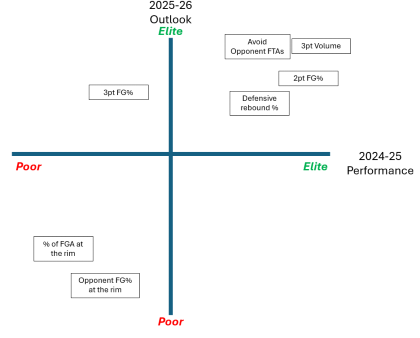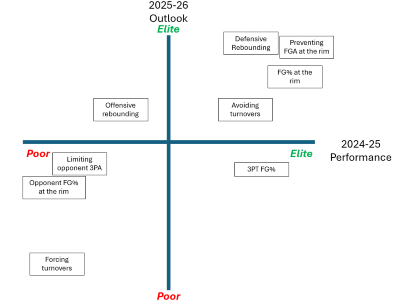The issues with Kentucky's offense
Presenting the evidence that the Wildcats have major issues to address
This is the 4th season I’ve been writing my UK newsletters, and every season it seems like there’s at least 1 article I write that’s basically titled “UK’s offense needs significant changes”. Today is again that day.
Before I get into the meat of this article, I want to let all of my readers know a couple things:
- It’s perfectly fine for anyone to question Kentucky’s offense. John Calipari may use the term “basketball Bennies” and dismiss questions as coming from people who don’t know what they’re talking about, but a significant number of people recognize there are issues. We may not be the right people to fix them, but it’s perfectly fine to hold someone with the power, fame, and responsibility of John Calipari accountable for evaluating what his team does well.
- John Calipari is a tremendous defensive coach. He organizes his team schematically on that end and gets the most out of players, year in and year out.
- There are a LOT of things contributing to UK’s offensive struggles lately. Sometimes players pass up shots, sometimes players just miss open shots, sometimes players make mental mistakes. Those things happen! What I’m most concerned with are structural issues and rotational decisions the coaching staff is making that put players in difficult positions. These are not new this season, they have been occurring for much of Calipari’s tenure at UK. I’ve written about them before. They happen as rosters change, which is why I don’t believe the core issues are due to things the players are doing.
There’s a simple quote that really hit home for me from a book called “The Biggest Bluff” by Maria Konnikova. Konnikova is a writer who decided to try to play poker professionally with coaching from a legendary player named Erik Seidel. In the book she relays a story about a time when Seidel was approached for advice by another young professional player who was complaining about an unlucky situation. The unnamed professional was sure he had played the right way and been unlucky, but after listening for a bit Seidel responded with 4 simple words: “Less certainty. More inquiry.”
What Seidel meant was that the unnamed player was taking for granted that he had done the right thing, and was unwilling to actually question himself and grow from the experience. I believe this is an issue with Kentucky’s coaching staff. I don’t know them at all, but based on John Calipari’s public statements he seems to frequently bemoan poor luck or the performance of his players. He seems unwilling to inquire as to whether his coaching choices lead to any negative outcomes. To reach the pinnacle of a profession (as he’s done) you certainly need an extreme level of confidence, but to remain there you also need to be able to evaluate yourself and adapt to solve problems. John Calipari has not evolved his offense in meaningful ways at Kentucky, and seems to refuse the idea that anything he’s doing might not be working.
I am extremely certain John Calipari will never read this, but for all of you who are still reading it, thank you for being willing to inquire about what might not be working for Kentucky. Let’s get into it.
Coming up, I explain (with GIFs!) how UK’s offense and defense didn’t do enough against UCLA…
Hoops Insight is a reader-supported publication. To receive new posts and support my work, consider becoming a free or paid subscriber.
An honest assessment of the UCLA game
Against UCLA, Kentucky played a tremendous (but not perfect) game on defense and a subpar one on offense. Bart Torvik’s website assigns an offensive and defense rating to each game (adjusted for pace and opponent), and rated UK’s game against UCLA as their 3rd best defensive game all season (behind Bellarmine and Duquesne) and 2nd worst game on offense (behind Bellarmine). Kentucky scored at a rate of 79.5 points per 100 possessions against UCLA and allowed 94.5 per 100. That’s the 3rd lowest rate of scoring by a UCLA opponent this season, but also the 2nd lowest rate UCLA has scored themselves.
ShotQuality.com was more charitable, projecting that based on type of shots taken and players taking them that UK should have won 73-71. UK and UCLA both were unlucky at the rim (by 10 points each), while UK was less lucky in midrange than UCLA and more unlucky on free throws and threes.
Sure, Kentucky missed some shots. However, according to Synergy UK hit 6 of 12 unguarded threes in the game. That’s great! They went 0 for 8 on guarded threes, so that’s disappointing…but UK shouldn’t be in a position where they need to shoot well on guarded threes in order to win games. There are a number of structural and strategic issues that gave UK no margin for error in this game, and that’s what I want to focus on today. Those are, in no particular order:
- Spacing issues making it harder for players to score
- Poor decisions in pick and roll defense
- Ineffective defensive rebounding
These aren’t issues that have just crept up; in fact, frequent readers will notice I’ve mentioned these before this season. If UK had been better in any one of these three areas, they likely win against UCLA. If they can improve in 1 or 2 of them this season, they have a chance to contend for a Final Four. With no improvement, they’ll be watching other teams for the final 2 weekends of the season.
Thank you for reading Hoops Insight. This post is public so feel free to share it.
The offensive spacing is at crisis mode
The thinking went that this season UK would finally have strong outside shooting to complement the returning Oscar Tshiebwe. While the Wildcats are 38th nationally in 3 point Fg%, they don’t use that very much. UK is 293rd in frequency of 3pt attempts, per KenPom, and even that’s inflated by their frequent transition threes. Per hoop-math.com, UK is 122nd in frequency of threes in transition by just 339th in halfcourt offense. Kentucky is unwilling to use three pointers in halfcourt offense despite the weapons they have.
A big part of this are the lineup choices that don’t feature multiple shooters. The Wildcats have 3 players who have hit 35% or better from three on 2 or more attempts per game (Reeves, Wallace, Fredrick). Those three have played together for 79 total non-garbage time possessions (out of 712 for the team), and have not played together at all since the Bellarmine game. In the limited time they have played together UK has scored better than UK’s average despite only hitting 29% from three with them in.
Against UCLA, spacing issues doomed Kentucky in multiple ways. UK opened up the game wanting to get the ball to Oscar Tshiebwe in post-ups, which was a great idea. UCLA is terrible at defending them, and Tshiebwe is great at scoring them. But these were thwarted because UCLA defenders left non-shooters (particularly Jacob Toppin) to swarm the post. Here’s an example:
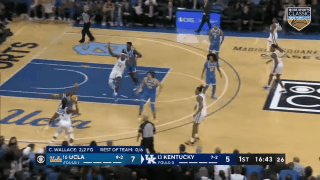
UCLA frequently treated Jacob Toppin as though they were wholly unconcerned with him on offense. Jamie Jaquez had license to roam off of him, and UK did absolutely nothing to capitalize on this or adjust.
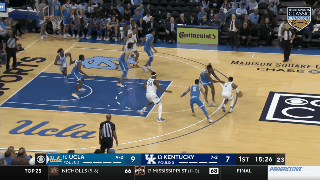
Here, Jaquez again helps off the weak side to make sure it’s very tough for Oscar Tshiebwe to do anything positive in the post. It appears like Toppin was looking to set a back screen to free up Cason Wallace in the corner, but this looks like freelancing by him as nobody else on the team seemed to even think of this possibility. What’s more, Kentucky basically never tried to used Toppin in this role at all.
Jacob Toppin has hit 3 of 20 three point attempts this season, and most teams now ignore him in halfcourt offense. Against UCLA, this actively hurt Kentucky’s attempts to use one of their biggest strengths. Toppin has become a net negative against teams with smart defensive schemes; UK was -26 against Michigan and UCLA with him in and +20 with him out.
The “adjustment” against UCLA came after the Wildcats had fallen behind 31-20, and it was to play Lance Ware at power forward. That makes it pretty clear that John Calipari didn’t believe that Toppin’s non-shooting was the problem, since Ware is also a non-shooter. UK did pull off a successful run, but this coincided with UCLA resting Jaime Jaquez for much of this stretch. The disturbing thing about this is that John Calipari has talked about wanting to play Chris Livingston at power forward, but in a game where that might have helped fix the core issues Calipari did not even consider it. The offensive creativity to counter what other teams are doing on defense is non-existent, and seems to be stubborness or (even worse) ignorance.
The spacing issues didn’t just hamper UK’s post offense, but also driving lanes for potential scorers. Most frequently this took the shape of players attempting to drive only to see a UK teammate (usually Oscar Tshiebwe) parked in their path, like so:

What exatly is Sahvir Wheeler supposed to do here? He gets by his man with help from a Tshiebwe pick, but it’s set so low that there’s nowhere for Wheeler to go. Additionally, 2 other UCLA defenders are in the paint to shut down anything good that could happen. UCLA clearly did their homework and realized that they can help liberally off non-shooters on the weakside, as long as they stay with shooters on the strong side. Here’s another example of a promising drive short-circuited because UCLA was able to easily bring help:
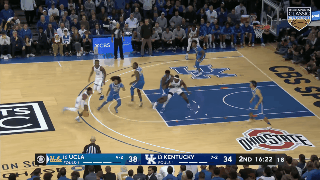
Oscar Tshiebwe rolls down the lane right into the path that Sahvir Wheeler could attack. Additionally, Jaime Jaquez is basically playing free safety and ignoring Lance Ware, who UK has standing in the corner for some reason. Wheeler makes a nice crossover to try to attack again once his teammates clear the lane, but again Jaquez gets to be a second defender on Wheeler because UK gives him an easy assignment covering Lance Ware. On the flip side, here’s what it looked like when UK actually cleared out some space for Wheeler:
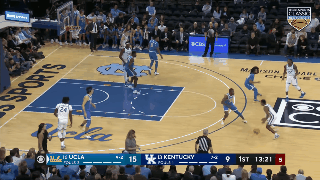
UK has 4 players on the perimeter, and Jaquez is guarding Chris Livingston and is hesitant to leave him open. Oscar Tshiebwe is on the far side of the lane, and because of that Wheeler is able to accelerate into the lane and Tshiebwe’s man is too late rotating.
Jacob Toppin is a one-man wrecking crew for UK’s offense, but not the good kind like you want. Against UK’s 5 top-100 opponents (Mich St, Gonzaga, Michigan, Yale, UCLA) the Wildcats have been outscored by -19 when Toppin is in and just -2 with him out. They are scoring 93.8 points/100 poss with him in and 99.8 with him out. This is in spite of the fact that his replacement at PF are Lance Ware and Damion Collins, who are in no way power forwards.
It is mind-boggling to think that John Calipari, as one of the most successful college basketball coaches, wouldn’t even attempt to address this. However, it’s been a problem all season and frankly all of Toppin’s UK career. Either he isn’t willing to recognize it or he’s too stubborn to change, but both get us at the same place: an offense that plays with one hand behind its back,
A strong game on defense, but some glaring holes
If UK is unwilling or unable to put together a high functioning offense, they put all the pressure on their defense to be nearly perfect. They were very good against UCLA, but had two glaring weaknesses.
The first is what has to be a strategic choice that is baffling to me, and that is going over screens in pick-and-roll with seemingly no regard for who the ballhandler is. The main culprit of this against UCLA was Sahvir Wheeler when covering Tyger Campbell. Campbell hit 41% of his threes last season but is at just 32% this season, and a quick scan on Synergy with a $20 monthly subscription can tell you that Campbell was poor on jumpers off the dribble last season but excellent on unguarded catch-and-shoot threes. The natural conclusion from this would be that Campbell should not be considered a threat to shoot pull-up threes out of pick and roll. Campbell hit 14-42 on threes out of pick and roll last season (33%) and 2-13 this season (UGH%, technically). Yet time and time again Wheeler tried to go over screens when guarding Campbell and ending up chasing from behind as Campbell got into the paint.
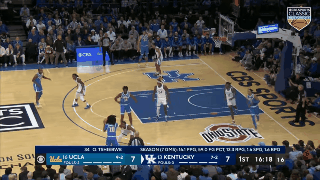
In the play above, UK was honestly lucky that Campbell took the jumper…Tshiebwe was in no man’s land covering 1 on 2, and Adem Bona could have taken a pocket pass and probably scored. Did UK’s coaching staff direct Wheeler to change this coverage and go under the screen to meet Campbell on the other side and cut off his drives? Reader, you know they didn’t:
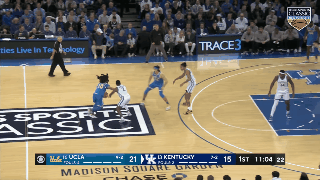
If anyone can provide an explanation of what Jacob Toppin is doing in this clip that is productive, I will let them pick the topic of my next article. Toppin doesn’t help despite Wheeler going over a screen (unsuccessully), and just watches Tyger Campbell get into the lane. UCLA’s center calls for an alley-oop that mercifully goes unheeded, and UK gives up another short jumper instead.
Tyger Campbell is a solid midrange shooter who has been terrible finishing at the rim and is a below-average shooter off the dribble from deep. Sahvir Wheeler played him as though he was a lethal shooter who couldn’t be given an inch of space. What’s worse, UK’s coaches either never addressed it, or Wheeler didn’t listen. Nearly every single time Wheeler was put in pick and roll, he went over the screen against Campbell. It wasn’t a good idea even once.
Another issue crept up against UCLA, and that’s defensive rebounding. All season long UK has been a wonderful defensive rebounding team when Oscar Tshiebwe is in and a below average one when he’s out. Against UCLA, they just decided to be a bad defensive rebounding team the whole game. Tshiebwe had a poor game for him, collecting only 22% of UCLA misses (he averages 30%). Not one Wildcat had what I would consider a good defensive rebounding game. Much of the time, UCLA players were allowed to go after offensive boards with little physical resistance:
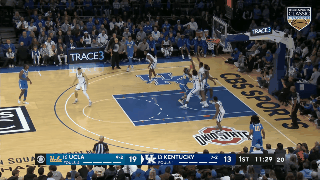
That’s poor Ugonna Onyenso in his lone minute of game time, reaching for a rebound unsuccesfully. Zero Wildcats made any real physical contact with a UCLA player, despite the rules allowing for boxouts. Here’s another example:
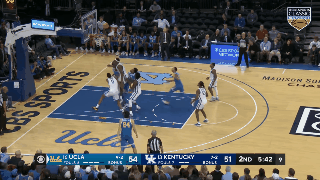
Here Jacob Toppin actually walks under the basket and then flails at the rebound unsuccessfully. Quite frankly, this is embarrassing technique and makes me wonder how UK exactly prepared for this game. UCLA is not a good rebounding team. They rank 84th nationally in offensive rebound rate, but collected 38% of their own misses vs UK. The only teams who allowed them to get a higher percentage were Oregon, pepperdine, and Long Beach State. By my stats, UCLA hit 5 of 7 shots for 12 points following offensive rebounds; the saving grave was that the Bruins only hit 1 of 7 FTs in these spots. UK only got 9 total points after offensive rebounds, and the Wildcats should not lose second chance points to any team.
The only real success Uk had in collecting defensive rebounds was when Tshiebwe and Ware were in together; they got 77% of UCLA misses then. However, playing Ware and Tshiebwe together is a nightmare on offense. UK simply cannot be so bad as to have to make a choice between rebounding or functional offense. If that’s the case, then how much more talent does John Calipari need in order to actually field a well-rounded team?
There are a lot of ways UK’s game against UCLA could have gone better. Some ideas I have while watching are:
- Play Chris Livingston at power forward with 3 guards to create spacing and make UCLA choose between doubling the post or defending the perimeter
- Use Jacob Toppin as an off-ball screener for Reeves and Fredrick, to make his man have to stay with him to help cover shooters
- Use Sahvir Wheeler’s quickness to keep ballhandlers out of the lane instead of trying to pressure a PG who rarely turns it over and is a non-shooter
- Play 4 guards and let Wheeler roast his man, making UCLA pay if they try to help on his drives since Wheeler is excellent at passing to shooters
- Emphasize boxing out on defense to finish possessions and let the team take credit for forcing misses; UK is 16th in opponent 2pt FG% but just 119th in defensive rebound rate
UK will probably look great against Florida A&M and Louisville, since neither of those teams will be able to take away much of what UK does well. However, the stubborn refusal to structure an offense that helps players score or make sensible strategic choices in pick and roll coverage means Kentucky will continue to have no margin for any short of bad shooting luck against quality teams, and will probably lose more than they win against teams with similar Final Four ambitions.
